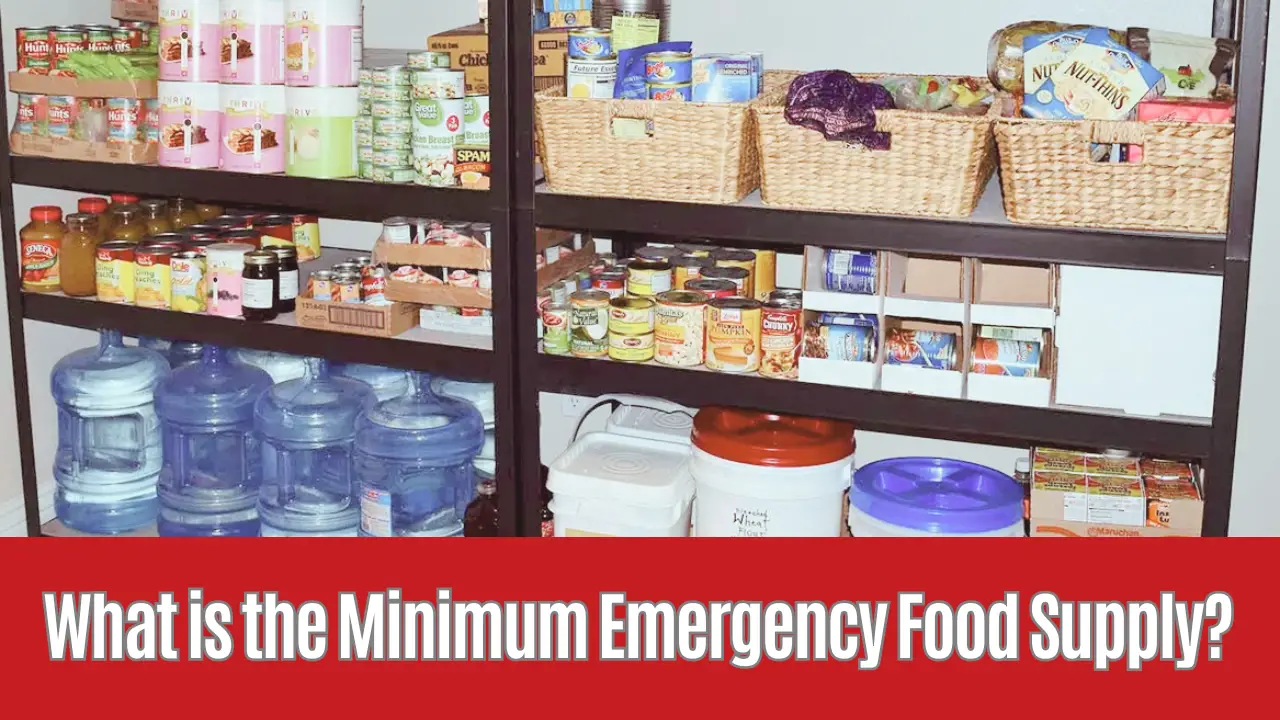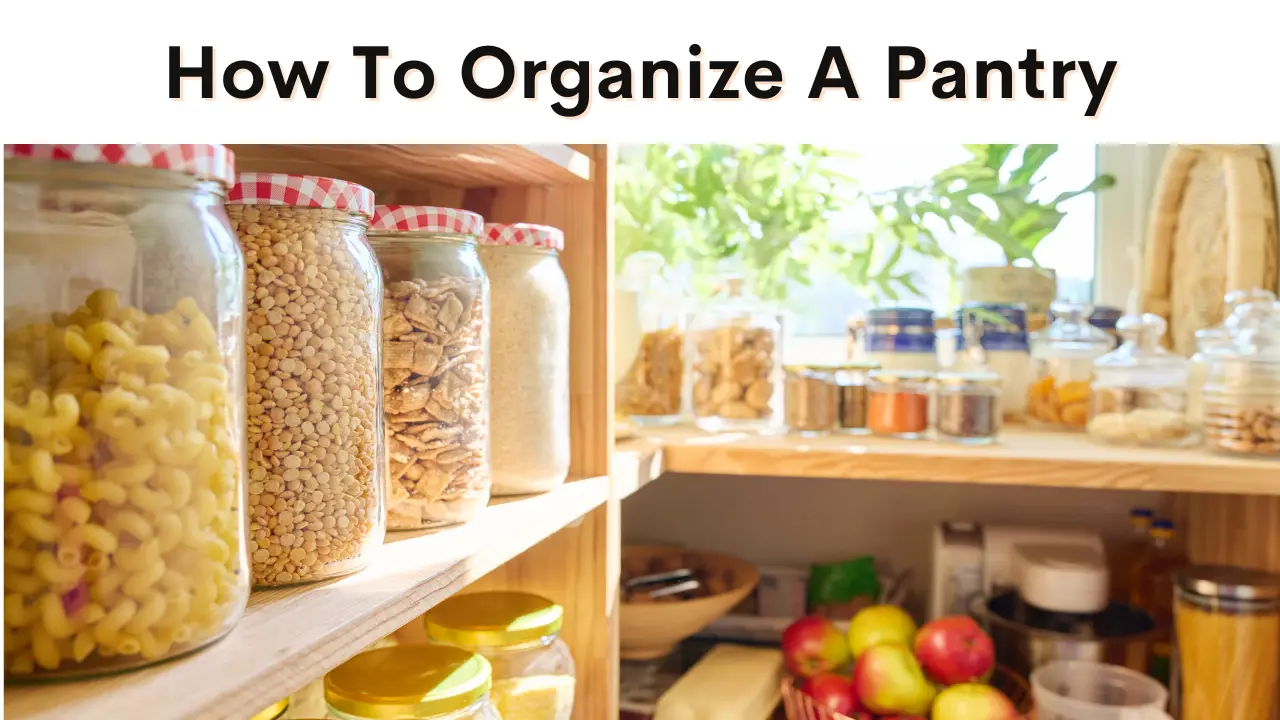Are you planning to give your pantry a fresh coat of paint but not sure how much paint you’ll need? Look no further!
In this article, we will guide you through the process of determining the right amount of paint for your pantry. By following a few simple steps, you’ll be able to calculate the quantity of paint required, taking into account factors like the size of your pantry, the type of paint you choose, and any additional areas like doors, windows, and trim.
So, let’s get started and make sure you have just the right amount of paint for your pantry makeover!
How much paint do I need for a pantry? The amount of paint needed for a pantry depends on its size and the number of coats required. Measure the pantry’s walls and ceiling to calculate the total square footage to be painted. Typically, one gallon of paint covers approximately 350 square feet with one coat.
When it comes to painting your pantry, the first step is to measure its size. This will help you determine the amount of paint needed to cover the walls.
Next, you’ll want to consider the type of paint you’ll be using. Different types of paints have different coverage rates, so it’s important to choose one that suits your needs.
Once you have these two pieces of information, you can easily calculate the quantity of paint required.
Additionally, don’t forget to account for any doors, windows, or trim that may need painting as well.
Lastly, it’s always a good idea to purchase some extra paint for touch-ups and to ensure you have enough in case of any mishaps.
With these tips, you’ll be well-prepared to tackle your pantry painting project with confidence!
Key Takeaways
- The first step in determining the amount of paint needed for a pantry is to measure the size of the walls.
- Consider the type of paint finish and choose a durable and easy-to-clean option for a pantry.
- Calculate the total square footage of the pantry walls and adjust for doors, windows, and trim.
- Purchase extra paint for touch-ups and mishaps, and consider additional supplies needed for the painting project.
Measure the Size of Your Pantry
You’ll need to measure the size of your pantry to determine how much paint you’ll need. Start by measuring the length, width, and height of the walls in your pantry.
Multiply the length by the width to find the area of each wall. Add up the areas of all the walls to get the total square footage. This will give you an idea of how much paint you’ll need to cover the entire pantry.
Once you have the total square footage, you can calculate the paint cost. The amount of paint you’ll need depends on the type of paint finish you choose. For example, if you’re using a flat or matte finish, you’ll typically need less paint compared to a glossy or semi-gloss finish.
Take into consideration any doors, windows, or trim in your pantry, as they will also need to be painted.
By calculating the paint cost and choosing the right paint finish, you’ll be able to determine how much paint you’ll need for your pantry.
Consider the Type of Paint
When considering the type of paint for your pantry, it’s essential to take into account its durability and the overall aesthetic you desire. Choosing the right paint finish can make a significant difference in how well the paint holds up over time. For a pantry, which is a high-traffic area prone to spills and stains, it’s best to opt for a paint finish that is easy to clean and resistant to moisture. A semi-gloss or satin finish is an excellent choice as it provides a smooth and durable surface that can withstand regular wiping and cleaning. These finishes also have a subtle sheen that adds a touch of elegance to your pantry.
Preparing the pantry walls for painting is another crucial step in achieving a flawless finish. Before applying the paint, make sure to clean the walls thoroughly to remove any dirt, grease, or stains. Use a mild detergent and warm water solution, and scrub gently with a sponge or soft cloth. Rinse the walls with clean water and allow them to dry completely before proceeding.
This step ensures that the paint adheres well and gives you a smooth and even finish. Additionally, it’s a good idea to fill any holes or cracks in the walls with spackling paste and sand them smooth before painting. Taking the time to properly prepare the walls will ensure that your pantry looks fresh and beautiful once the paint is applied.
Calculate the Paint Quantity
To ensure you have enough paint for your project, it’s important to calculate the amount required based on the size of your pantry and the coverage provided by the paint you’ve chosen.
Calculating paint quantity is a straightforward process that will save you from potential headaches down the line. Start by measuring the height, width, and length of your pantry walls. Multiply these measurements together to find the total square footage. Don’t forget to subtract any doors or windows from the calculation.
Once you have the square footage, you can determine how much paint you’ll need by checking the coverage information on the paint can. Most cans will provide an estimated coverage in square feet per gallon. Divide the total square footage by the coverage per gallon to get the number of gallons you’ll need. It’s always a good idea to round up to the nearest whole number to ensure you have enough paint for touch-ups and multiple coats, if necessary.
Estimating paint costs is another important aspect to consider when calculating the paint quantity for your pantry. The price of paint can vary depending on the brand, type, and quality. Take into account the cost per gallon and multiply it by the number of gallons needed to get an estimate of the total paint cost. Remember to also factor in any additional supplies you may need, such as brushes, rollers, and painter’s tape. It’s a good idea to budget a little extra for these items to ensure you have everything you need for a successful painting project.
By calculating the paint quantity and estimating the costs beforehand, you can avoid running out of paint in the middle of your pantry makeover and ensure that you stay within your budget.
Adjust for Doors, Windows, and Trim
To adjust for doors, windows, and trim when calculating paint quantity, start by measuring and subtracting the square footage of these openings from the total square footage of the walls. This will give you a more accurate estimate of the amount of paint needed.
Additionally, consider whether the trim or baseboards also need painting and factor in their square footage as well. By taking these steps, you can ensure that you have enough paint for the entire project while avoiding unnecessary waste.
Measure and Subtract the Square Footage of Openings
Calculating the required amount of paint for the pantry can be overwhelming, but don’t worry; we can easily determine it by measuring and subtracting the square footage of any openings. To ensure you have enough paint for your pantry renovation and minimize any waste, it’s important to take into account the doors, windows, and trim. By accurately measuring and subtracting the square footage of these openings, you can determine the exact amount of paint needed for the walls.
To help you visualize this process, here is a table that outlines the steps for calculating how much paint do I need for a pantry:
| Step | Measurement | Calculation |
|---|---|---|
| 1 | Measure the length and width of the pantry walls (excluding openings) | Length x Width |
| 2 | Measure the dimensions of each door and window in the pantry | Length x Width |
| 3 | Calculate the square footage of each opening | Step 2: result x number of openings |
| 4 | Subtract the total square footage of openings from the pantry walls | Step 1 result: Step 3 result |
By following these steps and using the provided table, you can easily determine the required amount of paint for your pantry. This will not only save you from purchasing excess paint but also help you minimize any wastage during your pantry renovation. Happy painting!
Determine if Trim or Baseboards Need Painting
Once you’ve measured and subtracted the square footage of openings, you can now assess whether the trim or baseboards in your pantry need painting.
When it comes to choosing the right paint finish for trim and baseboards, there are a few things to consider. First, you want to select a finish that’s durable and easy to clean, since trim and baseboards tend to get a lot of wear and tear. A semi-gloss or high-gloss finish is often recommended for these areas, as they’re more resistant to scratches and can be wiped down easily. However, if you prefer a more subtle look, a satin finish can also work well.
To achieve a professional-looking paint job on your trim and baseboards, there are a few tips to keep in mind. First, make sure to properly prepare the surface by cleaning it and sanding any rough spots. This will help the paint adhere better and result in a smoother finish.
Next, use a high-quality brush that’s specifically designed for trim work. This’ll ensure even coverage and minimize brush strokes. It’s also important to apply thin coats of paint rather than trying to cover the surface in one go. This will help prevent drips and allow for better control.
Lastly, take your time and be patient. Trim and baseboards require precision and attention to detail, so rushing through the job may result in a less polished outcome. By following these tips and choosing the right paint finish, you can achieve a professional and long-lasting look for your pantry trim and baseboards.
Purchase Extra Paint for Touch-Ups
Make sure you grab some extra paint so you can easily fix any scuffs or scratches that may happen in your pantry. It’s always a good idea to have some touch-up paint on hand, especially in high-traffic areas like a pantry. Accidents happen, and having extra paint will allow you to quickly cover up any imperfections and keep your pantry looking fresh and clean. Plus, it’s much easier to touch up a small area than to repaint the entire pantry.
To determine how much extra paint you need, it’s important to consider the size of your pantry and the type of paint you are using. Different paint finishes may require different amounts of touch-up paint. For example, a pantry with a glossy finish may show scuffs more easily than one with a matte finish, so you may need to have more touch-up paint on hand. It’s also a good idea to consider the color of your pantry walls. Darker colors may require more touch-up paint to cover up any marks. By taking these factors into account, you can ensure that you have enough extra paint to easily fix any issues that may arise in your pantry.
| Importance of Primer | Choosing the Right Paint Finish |
|---|---|
| A primer is essential when painting a pantry, as it creates a smooth and even surface for the paint to adhere to. It helps to prevent the paint from peeling or chipping over time, ensuring that your pantry walls stay looking fresh and new. | When choosing a paint finish for your pantry, consider the level of durability you need. A satin or semi-gloss finish is a popular choice for pantry walls, as it is easy to clean and can withstand regular wear and tear. However, if you prefer a more matte look, a flat or eggshell finish can also be used. Ultimately, the choice of paint finish depends on your personal preference and the level of maintenance you are willing to commit to. |
Conclusion
In conclusion, how much paint do I need for a pantry? When it comes to painting your pantry, it’s important to consider a few factors.
First, make sure to measure the size of your pantry accurately so you can determine the amount of paint you’ll need.
Next, consider the type of paint you want to use, taking into account factors such as durability and ease of cleaning.
Once you have these factors figured out, you can calculate the paint quantity needed based on the square footage of your pantry.
Don’t forget to adjust for any doors, windows, or trim that may need to be painted as well. It’s also a good idea to purchase a little extra paint for touch-ups down the road.
By following these steps, you can ensure that you have enough paint to complete your pantry project without running out.
So go ahead and get started on transforming your pantry into a beautiful and fresh space!










